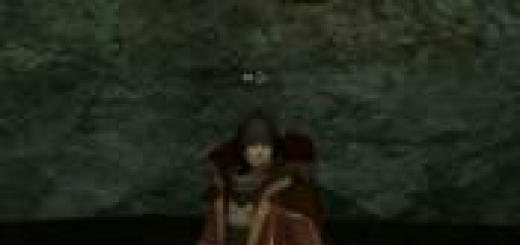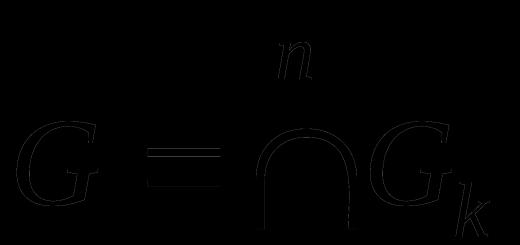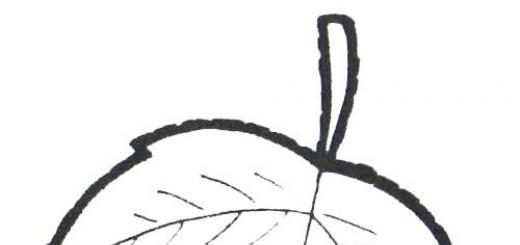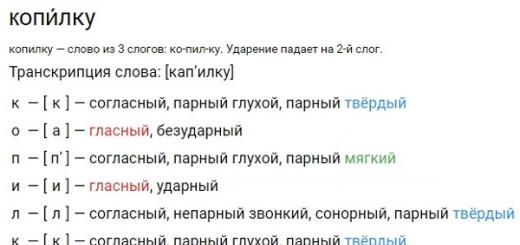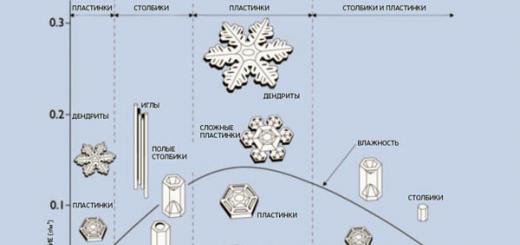Having the standard form $P\left(x,y\right)\cdot dx+Q\left(x,y\right)\cdot dy=0$, in which the left side is the total differential of some function $F\left( x,y\right)$ is called a total differential equation.
The equation in total differentials can always be rewritten as $dF\left(x,y\right)=0$, where $F\left(x,y\right)$ is a function such that $dF\left(x, y\right)=P\left(x,y\right)\cdot dx+Q\left(x,y\right)\cdot dy$.
Let's integrate both sides of the equation $dF\left(x,y\right)=0$: $\int dF\left(x,y\right)=F\left(x,y\right) $; the integral of the zero right-hand side is equal to an arbitrary constant $C$. Thus, the general solution to this equation in implicit form is $F\left(x,y\right)=C$.
In order for a given differential equation to be an equation in total differentials, it is necessary and sufficient that the condition $\frac(\partial P)(\partial y) =\frac(\partial Q)(\partial x) $ be satisfied. If the specified condition is met, then there is a function $F\left(x,y\right)$, for which we can write: $dF=\frac(\partial F)(\partial x) \cdot dx+\frac(\partial F)(\partial y)\cdot dy=P\left(x,y\right)\cdot dx+Q\left(x,y\right)\cdot dy$, from which we obtain two relations: $\frac(\ partial F)(\partial x) =P\left(x,y\right)$ and $\frac(\partial F)(\partial y) =Q\left(x,y\right)$.
We integrate the first relation $\frac(\partial F)(\partial x) =P\left(x,y\right)$ over $x$ and get $F\left(x,y\right)=\int P\ left(x,y\right)\cdot dx +U\left(y\right)$, where $U\left(y\right)$ is an arbitrary function of $y$.
Let us select it so that the second relation $\frac(\partial F)(\partial y) =Q\left(x,y\right)$ is satisfied. To do this, we differentiate the resulting relation for $F\left(x,y\right)$ with respect to $y$ and equate the result to $Q\left(x,y\right)$. We get: $\frac(\partial )(\partial y) \left(\int P\left(x,y\right)\cdot dx \right)+U"\left(y\right)=Q\left( x,y\right)$.
The further solution is:
- from the last equality we find $U"\left(y\right)$;
- integrate $U"\left(y\right)$ and find $U\left(y\right)$;
- substitute $U\left(y\right)$ into the equality $F\left(x,y\right)=\int P\left(x,y\right)\cdot dx +U\left(y\right)$ and finally we obtain the function $F\left(x,y\right)$.
We find the difference:
We integrate $U"\left(y\right)$ over $y$ and find $U\left(y\right)=\int \left(-2\right)\cdot dy =-2\cdot y$.
Find the result: $F\left(x,y\right)=V\left(x,y\right)+U\left(y\right)=5\cdot x\cdot y^(2) +3\cdot x\cdot y-2\cdot y$.
We write the general solution in the form $F\left(x,y\right)=C$, namely:
Find a particular solution $F\left(x,y\right)=F\left(x_(0) ,y_(0) \right)$, where $y_(0) =3$, $x_(0) =2 $:
The partial solution has the form: $5\cdot x\cdot y^(2) +3\cdot x\cdot y-2\cdot y=102$.
Shows how to recognize a differential equation in total differentials. Methods for solving it are given. An example of solving an equation in total differentials in two ways is given.
ContentIntroduction
A first order differential equation in total differentials is an equation of the form:(1) ,
where the left side of the equation is the total differential of some function U (x, y) from variables x, y:
.
Wherein .
If such a function U is found (x, y), then the equation takes the form:
dU (x, y) = 0.
Its general integral is:
U (x, y) = C,
where C is a constant.
If a first order differential equation is written in terms of its derivative:
,
then it is easy to bring it into shape (1)
. To do this, multiply the equation by dx. Then . As a result, we obtain an equation expressed in terms of differentials:
(1)
.
Property of a differential equation in total differentials
In order for the equation (1)
was an equation in total differentials, it is necessary and sufficient for the relation to hold:
(2)
.
Proof
We further assume that all functions used in the proof are defined and have corresponding derivatives in some range of values of the variables x and y. Point x 0 , y 0 also belongs to this area.
Let us prove the necessity of condition (2).
Let the left side of the equation (1)
is the differential of some function U (x, y):
.
Then
;
.
Since the second derivative does not depend on the order of differentiation, then
;
.
It follows that . Necessity condition (2)
proven.
Let us prove the sufficiency of condition (2).
Let the condition be satisfied (2)
:
(2)
.
Let us show that it is possible to find such a function U (x, y) that its differential is:
.
This means that there is such a function U (x, y), which satisfies the equations:
(3)
;
(4)
.
Let's find such a function. Let's integrate the equation (3)
by x from x 0
to x, assuming that y is a constant:
;
;
(5)
.
We differentiate with respect to y, assuming that x is a constant and apply (2)
:
.
The equation (4)
will be executed if
.
Integrate over y from y 0
to y:
;
;
.
Substitute in (5)
:
(6)
.
So, we have found a function whose differential
.
Sufficiency has been proven.
In the formula (6) ,U (x 0 , y 0) is a constant - the value of the function U (x, y) at point x 0 , y 0. It can be assigned any value.
How to recognize a differential equation in total differentials
Consider the differential equation:
(1)
.
To determine whether this equation is in total differentials, you need to check the condition (2)
:
(2)
.
If it holds, then this equation is in total differentials. If not, then this is not a total differential equation.
Example
Check if the equation is in total differentials:
.
Here
,
.
We differentiate with respect to y, considering x constant:
.
Let's differentiate
.
Because the:
,
then the given equation is in total differentials.
Methods for solving differential equations in total differentials
Sequential differential extraction method
The simplest method for solving an equation in total differentials is the method of sequentially isolating the differential. To do this, we use differentiation formulas written in differential form:
du ± dv = d (u ± v);
v du + u dv = d (uv);
;
.
In these formulas, u and v are arbitrary expressions made up of any combination of variables.
Example 1
Solve the equation:
.
Previously we found that this equation is in total differentials. Let's transform it:
(P1) .
We solve the equation by sequentially isolating the differential.
;
;
;
;
.
Substitute in (P1):
;
.
Successive integration method
In this method we are looking for the function U (x, y), satisfying the equations:
(3)
;
(4)
.
Let's integrate the equation (3)
in x, considering y constant:
.
Here φ (y)- an arbitrary function of y that needs to be determined. It is the constant of integration. Substitute into the equation (4)
:
.
From here:
.
Integrating, we find φ (y) and, thus, U (x, y).
Example 2
Solve the equation in total differentials:
.
Previously we found that this equation is in total differentials. Let us introduce the following notation:
,
.
Looking for Function U (x, y), the differential of which is the left side of the equation:
.
Then:
(3)
;
(4)
.
Let's integrate the equation (3)
in x, considering y constant:
(P2)
.
Differentiate with respect to y:
.
Let's substitute in (4)
:
;
.
Let's integrate:
.
Let's substitute in (P2):
.
General integral of the equation:
U (x, y) = const.
We combine two constants into one.
Method of integration along a curve
Function U defined by the relation:
dU = p (x, y) dx + q(x, y) dy,
can be found by integrating this equation along the curve connecting the points (x 0 , y 0) And (x, y):
(7)
.
Because the
(8)
,
then the integral depends only on the coordinates of the initial (x 0 , y 0) and final (x, y) points and does not depend on the shape of the curve. From (7)
And (8)
we find:
(9)
.
Here x 0
and y 0
- permanent. Therefore U (x 0 , y 0)- also constant.
An example of such a definition of U was obtained in the proof:
(6)
.
Here integration is performed first along a segment parallel to the y axis from the point (x 0 , y 0 ) to the point (x 0 , y). Then integration is performed along a segment parallel to the x axis from the point (x 0 , y) to the point (x, y) .
More generally, you need to represent the equation of a curve connecting points (x 0 , y 0 ) And (x, y) in parametric form:
x 1 = s(t 1); y 1 = r(t 1);
x 0 = s(t 0); y 0 = r(t 0);
x = s (t); y = r (t);
and integrate over t 1
from t 0
to t.
The easiest way to perform integration is over a segment connecting points (x 0 , y 0 ) And (x, y). In this case:
x 1 = x 0 + (x - x 0) t 1; y 1 = y 0 + (y - y 0) t 1;
t 0 = 0
; t = 1
;
dx 1 = (x - x 0) dt 1; dy 1 = (y - y 0) dt 1.
After substitution, we obtain the integral over t of 0
before 1
.
This method, however, leads to rather cumbersome calculations.
References:
V.V. Stepanov, Course of differential equations, "LKI", 2015.
Statement of the problem in the two-dimensional case
Reconstructing a function of several variables from its total differential
9.1. Statement of the problem in the two-dimensional case. 72
9.2. Description of the solution. 72
This is one of the applications of a curvilinear integral of the second kind.
The expression for the total differential of a function of two variables is given:
Find the function.
1. Since not every expression of the form is a complete differential of some function U(x,y), then it is necessary to check the correctness of the problem statement, that is, to check the necessary and sufficient condition for the total differential, which for a function of 2 variables has the form . This condition follows from the equivalence of statements (2) and (3) in the theorem of the previous section. If the indicated condition is met, then the problem has a solution, that is, a function U(x,y) can be restored; if the condition is not met, then the problem has no solution, that is, the function cannot be restored.
2. You can find a function from its total differential, for example, using a curvilinear integral of the second kind, calculating it from along a line connecting a fixed point ( x 0 ,y 0) and variable point ( x;y) (Rice. 18):
Thus, it is obtained that the curvilinear integral of the second kind of the total differential dU(x,y) is equal to the difference between the values of the function U(x,y) at the end and start points of the integration line.
Knowing this result now, we need to substitute dU into the curvilinear integral expression and calculate the integral along the broken line ( ACB), given its independence from the shape of the integration line:
on ( A.C.): on ( NE) :
| (1) |
Thus, a formula has been obtained with the help of which a function of 2 variables is restored from its total differential.
3. It is possible to restore a function from its total differential only up to a constant term, since d(U+ const) = dU. Therefore, as a result of solving the problem, we obtain a set of functions that differ from each other by a constant term.
Examples (reconstructing a function of two variables from its total differential)
1. Find U(x,y), If dU = (x 2 – y 2)dx – 2xydy.
We check the condition for the total differential of a function of two variables:
The complete differential condition is satisfied, which means the function U(x,y) can be restored.
Check: – correct.
Answer: U(x,y) = x 3 /3 – xy 2 + C.
2. Find a function such that
We check the necessary and sufficient conditions for the complete differential of a function of three variables: , , , if the expression is given.
In the problem being solved
all conditions for a complete differential are satisfied, therefore, the function can be restored (the problem is formulated correctly).
We will restore the function using a curvilinear integral of the second kind, calculating it along a certain line connecting a fixed point and a variable point, since
(this equality is derived in the same way as in the two-dimensional case).
On the other hand, a curvilinear integral of the second kind from a total differential does not depend on the shape of the integration line, so it is easiest to calculate it along a broken line consisting of segments parallel to the coordinate axes. In this case, as a fixed point, you can simply take a point with specific numerical coordinates, monitoring only that at this point and along the entire line of integration the condition for the existence of a curvilinear integral is satisfied (that is, so that the functions , and are continuous). Taking into account this remark, in this problem we can take, for example, the point M 0 as a fixed point. Then on each of the links of the broken line we will have
10.2. Calculation of surface integral of the first kind. 79
10.3. Some applications of the surface integral of the first kind. 81
It may happen that the left side of the differential equation
is the total differential of some function:
and therefore, equation (7) takes the form .
If the function is a solution to equation (7), then , and, therefore,
where is a constant, and vice versa, if some function turns the finite equation (8) into an identity, then, differentiating the resulting identity, we obtain , and therefore, , where is an arbitrary constant, is the general integral of the original equation.
If initial values are given, then the constant is determined from (8) and
is the desired partial integral. If at the point , then equation (9) is defined as an implicit function of .
In order for the left side of equation (7) to be a complete differential of some function , it is necessary and sufficient that
If this condition specified by Euler is satisfied, then equation (7) can be easily integrated. Really, . On the other side, . Hence,
When calculating the integral, the quantity is considered as a constant, therefore it is an arbitrary function of . To determine the function, we differentiate the found function with respect to and, since , we obtain
From this equation we determine and, by integrating, find .
As is known from the course of mathematical analysis, it is even simpler to determine a function by its total differential, taking the curvilinear integral of between a certain fixed point and a point with variable coordinates along any path:
Most often, as an integration path, it is convenient to take a broken line composed of two links parallel to the coordinate axes; in this case
Example. .
The left side of the equation is the total differential of some function, since
Therefore, the general integral has the form
Another method for defining a function can be used:
We choose, for example, the origin of coordinates as the starting point, and a broken line as the integration path. Then
and the general integral has the form
Which coincides with the previous result, leading to a common denominator.
In some cases, when the left side of equation (7) is not a complete differential, it is easy to select a function, after multiplying by which the left side of equation (7) turns into a complete differential. This function is called integrating factor. Note that multiplication by an integrating factor can lead to the appearance of unnecessary partial solutions that turn this factor to zero.
Example. .
Obviously, after multiplication by a factor, the left side turns into a total differential. Indeed, after multiplying by we get
or, integrating, . Multiplying by 2 and potentiating, we have .
Of course, the integrating factor is not always chosen so easily. In the general case, to find the integrating factor, it is necessary to select at least one partial solution of the equation in partial derivatives, or in expanded form, that is not identically zero
which, after dividing by and transferring some terms to another part of the equality, is reduced to the form
In the general case, integrating this partial differential equation is by no means a simpler task than integrating the original equation, but in some cases selecting a particular solution to equation (11) is not difficult.
In addition, considering that the integrating factor is a function of only one argument (for example, it is a function of only or only , or a function of only , or only , etc.), one can easily integrate equation (11) and indicate the conditions under which an integrating factor of the type under consideration exists. This identifies classes of equations for which the integrating factor can be easily found.
For example, let’s find the conditions under which the equation has an integrating factor that depends only on , i.e. . In this case, equation (11) simplifies and takes the form , from which, considering as a continuous function of , we obtain
If is a function only of , then an integrating factor depending only on , exists and is equal to (12), otherwise an integrating factor of the form does not exist.
The condition for the existence of an integrating factor depending only on is satisfied, for example, for a linear equation or . Indeed, and therefore . Conditions for the existence of integrating factors of the form, etc., can be found in a completely similar way.
Example. Does the equation have an integrating factor of the form ?
Let's denote . Equation (11) at takes the form , whence or
For the existence of an integrating factor of a given type, it is necessary and, under the assumption of continuity, sufficient that it be a function only . In this case, therefore, the integrating factor exists and is equal to (13). When we receive. Multiplying the original equation by , we reduce it to the form
Integrating, we obtain , and after potentiation we will have , or in polar coordinates - a family of logarithmic spirals.
Example. Find the shape of a mirror that reflects parallel to a given direction all rays emanating from a given point.
Let's place the origin of coordinates at a given point and direct the abscissa axis parallel to the direction specified in the problem conditions. Let the beam fall on the mirror at point . Let us consider a section of the mirror by a plane passing through the abscissa axis and the point . Let us draw a tangent to the section of the mirror surface under consideration at point . Since the angle of incidence of the ray is equal to the angle of reflection, the triangle is isosceles. Hence,
The resulting homogeneous equation is easily integrated by changing variables, but it is even easier, freed from irrationality in the denominator, to rewrite it in the form . This equation has an obvious integrating factor , , , (family of parabolas).
This problem can be solved even more simply in coordinates and , where , and the equation for the section of the required surfaces takes the form .
It is possible to prove the existence of an integrating factor, or, what is the same thing, the existence of a nonzero solution to the partial differential equation (11) in some domain if the functions and have continuous derivatives and at least one of these functions does not vanish. Therefore, the integrating factor method can be considered as a general method for integrating equations of the form , however, due to the difficulty of finding the integrating factor, this method is most often used in cases where the integrating factor is obvious.
some functions. If we restore a function from its total differential, we will find the general integral of the differential equation. Below we will talk about method of restoring a function from its total differential.
The left side of a differential equation is the total differential of some function U(x, y) = 0, if the condition is met.
Because full differential function U(x, y) = 0 This  , which means that when the condition is met, it is stated that .
, which means that when the condition is met, it is stated that .
Then,  .
.
From the first equation of the system we obtain ![]() . We find the function using the second equation of the system:
. We find the function using the second equation of the system:

This way we will find the required function U(x, y) = 0.
Example.
Let's find the general solution of the DE ![]() .
.
Solution.
In our example. The condition is met because:

Then, the left side of the initial differential equation is the total differential of some function U(x, y) = 0. We need to find this function.
Because ![]() is the total differential of the function U(x, y) = 0, Means:
is the total differential of the function U(x, y) = 0, Means:
 .
.
We integrate by x 1st equation of the system and differentiate with respect to y result:
 .
.
From the 2nd equation of the system we obtain . Means:

Where WITH- arbitrary constant.
Thus, the general integral of the given equation will be ![]() .
.
There is a second one method of calculating a function from its total differential. It consists of taking the line integral of a fixed point (x 0 , y 0) to a point with variable coordinates (x, y):  . In this case, the value of the integral is independent of the path of integration. It is convenient to take as an integration path a broken line whose links are parallel to the coordinate axes.
. In this case, the value of the integral is independent of the path of integration. It is convenient to take as an integration path a broken line whose links are parallel to the coordinate axes.
Example.
Let's find the general solution of the DE ![]() .
.
Solution.
We check the fulfillment of the condition:

Thus, the left side of the differential equation is the complete differential of some function U(x, y) = 0. Let's find this function by calculating the curvilinear integral of the point (1; 1) before (x, y). As a path of integration we take a broken line: the first section of the broken line is passed along a straight line y = 1 from point (1, 1) before (x, 1), the second section of the path takes a straight line segment from the point (x, 1) before (x, y):

So, the general solution of the remote control looks like this: ![]() .
.
Example.
Let us determine the general solution of the DE.
Solution.
Because , which means that the condition is not met, then the left side of the differential equation will not be a complete differential of the function and you need to use the second solution method (this equation is a differential equation with separable variables).
